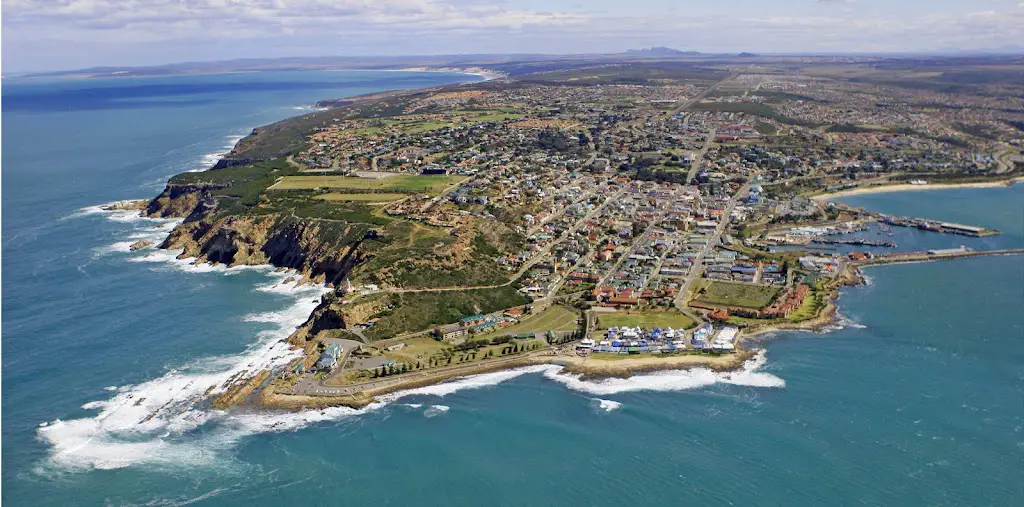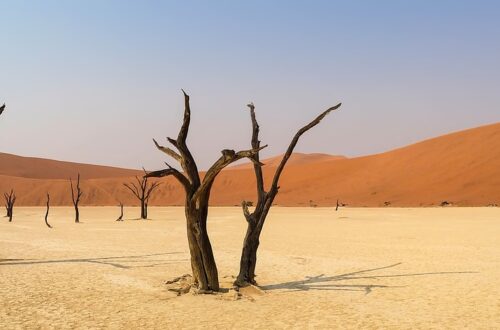Kruger National Park : A Comprehensive Guide to African Safari

Introduction to Kruger National Park.
Discovering Africa’s Icon:
Kruger National Park is a vast wilderness sanctuary located in northeastern South Africa. Established in 1898, Kruger National Park was named after Paul Kruger, the then-President of the South African Republic. The park was initially envisioned as a sanctuary to protect the wildlife in the region, particularly against excessive hunting. Over the years, it has grown and evolved into a world-renowned conservation area and safari destination., it’s not only one of Africa’s oldest but also one of its largest national parks, spanning nearly 2 million hectares. Its size and diversity of ecosystems make it an unparalleled safari destination.
The Kruger Experience:
What truly sets Kruger National Park apart from other destinations is its status as a wildlife haven. Here, within its nearly 2 million hectares of pristine wilderness, you’ll discover an unparalleled diversity of fauna. The park proudly boasts its claim to fame as the home of the famous Big Five – the regal lion, the elusive leopard, the majestic elephant, the formidable buffalo, and the resilient rhino.
However, Kruger’s wildlife offerings extend far beyond these iconic species. The park teems with a multitude of other fascinating creatures, each a vital piece of the intricate ecological puzzle. Venture through its diverse ecosystems, and you’ll encounter the elegant cheetah, the stealthy African leopard, and the captivating packs of African wild dogs, often referred to as “painted wolves” for their distinctive coats.
As you traverse this remarkable terrain, you’ll have the privilege of observing not only the charismatic megafauna but also the smaller, no less intriguing members of the animal kingdom. Graceful giraffes, placid zebras, and agile antelope dot the savannas. Playful troops of vervet monkeys swing through the trees, while a dazzling array of birdlife fills the air with vibrant hues and melodious songs.
Biodiversity.
Kruger National Park’s exceptional biodiversity, which extends from the magnificent Big Five to the most unassuming insects and plants, provides an immersive and awe-inspiring experience for wildlife enthusiasts. It’s a testament to the intricate web of life that thrives in this extraordinary natural realm, a true jewel of South Africa’s wild heritage.
Ecosystem Diversity:
Kruger National Park isn’t a uniform canvas but rather a vibrant tapestry woven with a rich diversity of ecosystems. This vast wilderness unfolds in a spectrum of landscapes and experiences, each distinct and captivating in its own right.
In the southern reaches of the park, the terrain transforms into a lush bushveld, where thickets of acacia trees and thorny scrub create a green oasis. Here, you’ll encounter a mosaic of life, from herds of herbivores to prides of lions basking in the shade of ancient trees. The southern region’s perennial rivers, like the Sabie and Crocodile, offer prime wildlife viewing opportunities, drawing a symphony of animals to their life-sustaining waters.
As you journey northwards, Kruger’s character shifts, giving way to the arid Mopane shrubveld. This vast expanse is dominated by Mopane trees, their distinctive butterfly-shaped leaves forming a dramatic backdrop. It’s a realm where elephants, adorned with dusty coats, traverse the open plains, and curious antelope dart through the brush. Here, birdlife thrives, with raptors circling overhead and vibrant avian species flitting among the branches.
In between, you’ll encounter woodlands, savannas, rocky outcrops, and riverine forests, each adding its unique colors and textures to the Kruger tapestry. The transition from one ecosystem to another is like turning the pages of a storybook, each page revealing a new chapter in the park’s intricate tale.
These diverse ecosystems make Kruger National Park not just a destination for a safari but an expedition through a range of habitats, each unveiling its own cast of characters and the untold narratives of the wild. Whether you find yourself in the verdant south or the arid north, each landscape in Kruger contributes to the magnificent symphony of life that unfolds within its borders.
Planning your Kruger safari.
When to Visit: Selecting the ideal time to embark on your Kruger adventure is a pivotal decision, one that can significantly influence your safari experience. The park offers distinct charms in different seasons, allowing you to tailor your visit according to your preferences.
Dry Winter Months (May to September):
Game Viewing Paradise: These months, from May to September, herald the dry winter season. It’s a time when the landscape takes on a parched, golden hue. With water sources dwindling, animals gather around remaining waterholes, turning game viewing into a spectacle. The vegetation thins out, revealing hidden gems in the savanna, and wildlife sightings are frequent.
Comfortable Climate: The winter months bring cooler temperatures, making for more comfortable game drives. The reduced foliage also means that animals are less concealed, providing excellent photographic opportunities.
Malaria-Free: The winter season is considered a low-risk period for malaria, making it an attractive choice for visitors who prefer to avoid antimalarial medications.
Wet Summer Months (October to April):
Lush Greenery:
From October to April, the park undergoes a transformation as the heavens open, drenching the land in life-giving rain. The landscape bursts into vibrant shades of green, and rivers swell with rejuvenating water.
Breeding and Births:
The wet season is a time of renewal, with many animals giving birth to their young. Witnessing the tender moments of wildlife families is a heartwarming experience.
Birdwatcher’s Paradise:
The arrival of migratory birds adds an extra layer of enchantment. Birdwatchers will be thrilled by the diversity of avian life that flocks to the park during this season.
Fewer Crowds:
While the dry season draws larger crowds, the wet season often brings fewer visitors. You can relish a more intimate connection with the wilderness, as the park is less busy.
Your choice of timing will ultimately depend on your preferences. If your primary goal is exceptional game viewing, the dry winter months provide an excellent opportunity. On the other hand, if you relish lush landscapes and are captivated by the intricate world of birds and new life, the wet summer months will hold a special allure. Whichever season you choose, Kruger National Park promises to deliver an unforgettable safari experience, with nature’s wonders on full display.
Access Points:
Kruger has several entrance gates. Each gate provides access to a different part of the park, and your choice of gate may depend on your itinerary and desired experiences.
Self-Drive or Guided Safari?:
Self-Drive or Guided Safari?: Kruger allows visitors the flexibility to explore on their own or join guided game drives. Both options offer unique experiences, and your choice may depend on your level of expertise and preferences.
Exploring Krugers Camps.
The history of the camps in Kruger National Park is a story of conservation, exploration, and the enduring relationship between humans and the wild. These camps, scattered throughout the park, have played a significant role in the park’s development and continue to be an integral part of the Kruger experience.
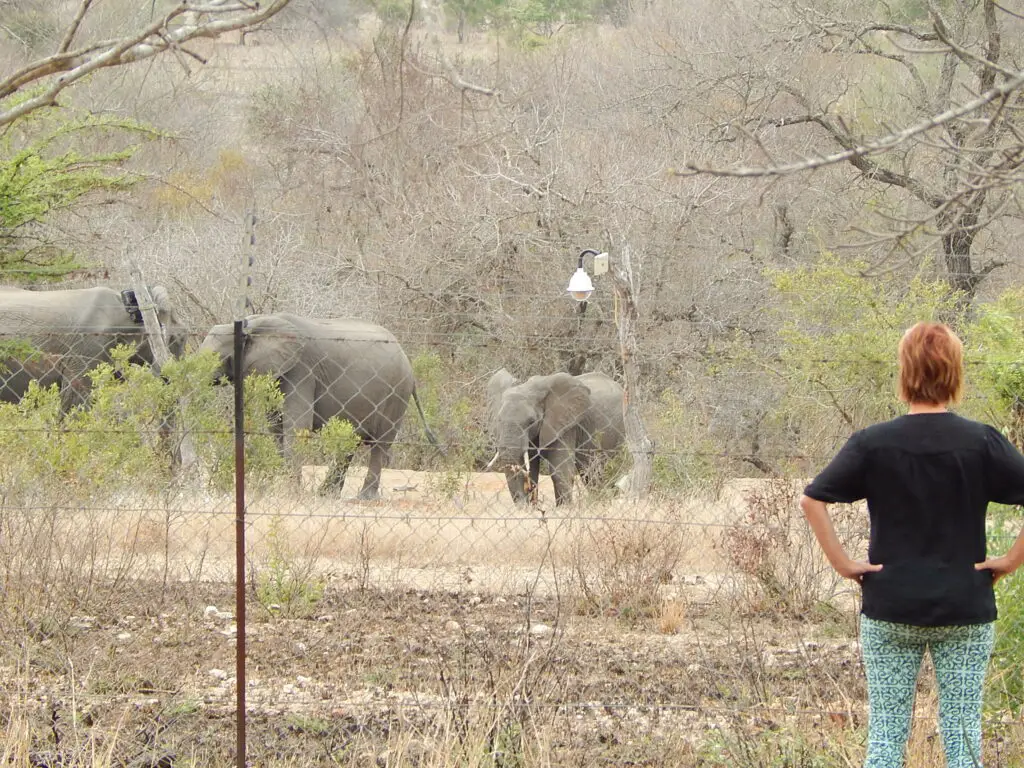
Early Exploration and the Birth of Kruger National Park:
In the late 19th century, this region was an untamed wilderness, home to diverse wildlife and indigenous people.
The park’s story begins with the vision of Paul Kruger, then President of the South African Republic, who recognized the need to protect the area’s wildlife and wilderness.
In 1898, the Sabie Game Reserve was proclaimed, laying the foundation for what would become Kruger National Park.
The First Camps:
The first camps in Kruger, such as Skukuza and Pretoriuskop, were established in the early 1900s.
They primarily served as basic accommodation for park management and early rangers.
The Role of James Stevenson-Hamilton.
James Stevenson-Hamilton, the park’s first warden, played a pivotal role in shaping Kruger’s history.
He not only oversaw the park’s expansion but also worked to protect it from poaching and human encroachment.
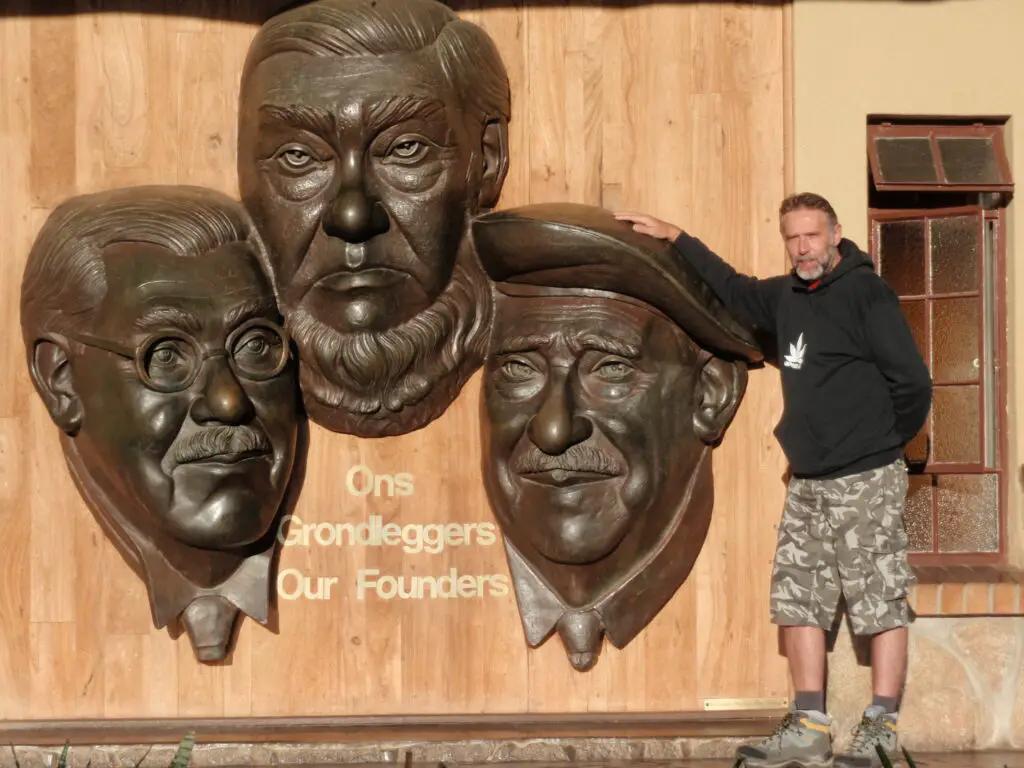
Expansion and Conservation.
Kruger continued to grow over the years, and more camps were established to accommodate tourists and researchers.
Conservation efforts intensified, with a focus on preserving the park’s unique ecosystems and its diverse wildlife.
The Impact of World War II:
– During World War II, many of the camps were closed, and the park served as a sanctuary for refugees and Allied troops.
Post-Apartheid Transformation:
– After the end of apartheid, Kruger National Park underwent significant changes to promote inclusivity and community involvement.
– More lodges and camps, including private concessions, were established, catering to a broader range of visitors.
Modern Camps and Amenities.
– Today, Kruger National Park boasts a variety of camps, each with its unique character, accommodations, and attractions.
Visitors can choose from public rest camps, private lodges, and wilderness trails, each offering a distinct experience.
Conservation Challenges and Achievements.
Kruger continues to face challenges like poaching and habitat loss, but it also celebrates conservation successes, such as the recovery of white rhino populations.
The park remains a symbol of South Africa’s commitment to preserving its natural heritage.
The history of Kruger’s camps is intertwined with the park’s evolution from a fledgling game reserve to one of the world’s most celebrated national parks. It serves as a testament to the enduring passion for conservation and the enduring allure of the African wilderness. Today, the camps offer visitors a gateway to the park’s remarkable beauty and an opportunity to be part of the ongoing story of Kruger National Park.
Kruger National Park boasts a network of rest camps, each offering a unique experience. These camps provide accommodations, dining facilities, and various amenities for travelers. Let’s delve deeper into each of these camps, providing you with insights into their history, setting, and what you can expect in terms of wildlife encounters.
Kruger Rest Camps.
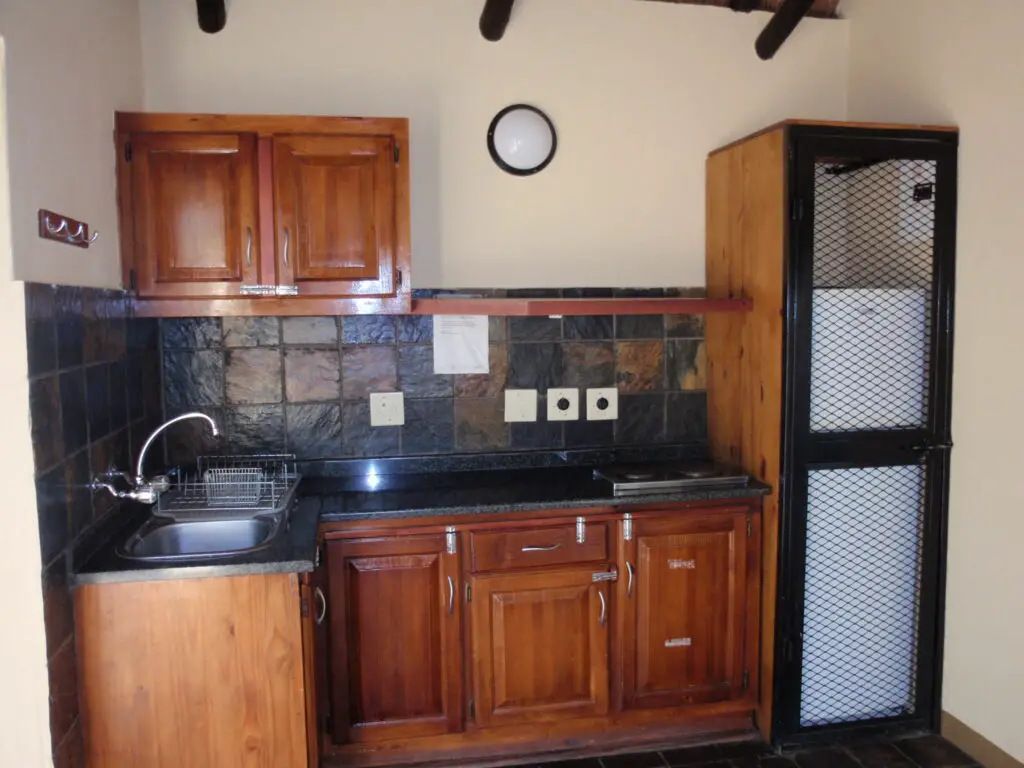
Berg-en-Dal Rest Camp:
Located in the far southern part of the park, Berg-en-Dal is a camp that offers a blend of history and wildlife viewing. The camp’s museum provides a fascinating journey through the area’s past, making it an excellent starting point for your Kruger adventure. Berg-en-Dal is known for its significant rhino population, so you’re likely to have close encounters with these magnificent creatures.
Lower Sabie Rest Camp:
Situated along the Sabie River, Lower Sabie is a camp that offers exceptional river views. The restaurant here provides guests with a perfect vantage point for observing wildlife from a distance while enjoying a meal. The camp is a prime location for spotting animals coming to drink by the river, and it’s common to see elephants, hippos, and crocodiles in this area.
Skukuza Rest Camp:
Skukuza is the largest and most well-equipped camp in Kruger. It serves as the park’s administrative hub and provides an array of amenities. If you’re seeking both comfort and proximity to game-rich areas, Skukuza is an ideal base. The camp is located near Skukuza Lake, which is frequented by a variety of wildlife. It’s not uncommon to spot hippos, crocodiles, and a multitude of bird species in this area.
Satara Rest Camp:
Situated in central Kruger, Satara is often referred to as the “Lion Camp” due to its high lion population. The camp is located in open grasslands where herds of antelope graze peacefully. Game drives departing from Satara frequently result in thrilling encounters with lions, often referred to as the kings of the jungle.
Olifants Rest Camp:
Perched on a hill overlooking the Olifants River, this camp offers breathtaking vistas of the surrounding landscape. Olifants is celebrated for its remarkable birdlife. The camp’s restaurant, situated on the hillside, offers panoramic views of the river and the animals that visit its banks, making it a peaceful spot to unwind and soak in the surroundings.
Shingwedzi Rest Camp:
Shingwedzi is located in the remote northern reaches of Kruger, offering a unique wilderness experience. The camp is characterized by its Mopane-dominated landscapes, and it’s an excellent place to appreciate the tranquility of the African bush. A particular highlight is the procession of elephants that frequently visit the Shingwedzi River.
Crocodile Bridge Rest Camp:
Situated in the far south of Kruger, Crocodile Bridge is known for its proximity to the park’s southern gate and excellent game viewing along the Crocodile River. Visitors often spot lions, leopards, and large herds of elephants in this region. The camp provides an excellent starting point for your Kruger adventure, as you’re almost immediately immersed in the world of African wildlife.
Letaba Rest Camp:
Nestled in a riverine forest along the Letaba River, this camp offers a unique setting for wildlife viewing. The Mopane shrubveld in the vicinity attracts large herds of elephants, making Letaba a fantastic place for elephant enthusiasts. The river is also home to hippos, and you can often hear their calls during the night.
Mopani Rest Camp:
The newest of all the Kruger Park rest camps and commands a spectacular view over the Pioneer Dam.
Orpen Rest Camp:
Amongst rock gardens vibrant with Aloes and Barberton Daisies. This small camp is situated at the Orpen Gate entrance to the Kruger National Park.
Pretoriuskop Rest Camp:
The oldest Rest Camp in Kruger Park and holds a large population of White rhinos.
Bateleur Bushveld Camp:
For those seeking a more secluded and intimate experience, Bateleur is an ideal choice. The camp offers private chalets and an atmosphere that encourages guests to connect with nature. It’s a place to unwind, immerse yourself in the beauty of the African bush, and create your own unique experiences.
Wilderness Trails Camps:
In addition to rest camps, Kruger offers wilderness trails camps for those looking for a more immersive and rustic experience. These camps are accessible through guided walking safaris and offer a deeper connection with the bush.
Game Drives and Safari Adventures.
Game Drives:Game drives within Kruger National Park stand as the pulsating heart of the wildlife experience, allowing you to venture deep into the wild and witness its untamed beauty. These excursions, led by knowledgeable rangers and skilled trackers, offer invaluable insights into the mysteries of the African bush.
Guided Game Drives:
These guided drives are a chance to tap into the expertise of seasoned rangers and trackers. Their keen eyes and extensive knowledge of the park’s inhabitants make each drive an educational and thrilling experience.
Your guides are not just experts in wildlife behavior but also in the art of tracking and interpreting the subtle signs of the bush. They’ll help you unlock the secrets hidden in the wilderness.
Morning Drives:
The dawn of a new day in Kruger is magical. Morning game drives, especially in the soft light of sunrise, are incredibly productive for animal sightings. As the day begins, predators often retreat from the heat of the previous day, making this time ideal for tracking elusive big cats.
As the sun’s first rays paint the landscape with golden hues, you’re likely to encounter a variety of animals, from grazing herbivores to birds starting their daily routines.
Evening Drives:
The evening game drives bring a new dimension to your safari experience. The African bush transforms as the diurnal animals prepare for their nightly activities, and the nocturnal creatures emerge from their daytime hideaways.
These drives, conducted as the day cools and the stars emerge, offer the prospect of encountering elusive creatures such as leopards, hyenas, and the ever-fascinating aardvark.
In the company of your guides, you’ll venture deep into the heart of the park, where each moment may bring an exhilarating wildlife encounter. Whether it’s the thrill of tracking a pride of lions on a hunt, the awe of witnessing elephants in their natural habitat, or the serenity of observing a family of zebras, Kruger’s game drives promise to etch indelible memories of the wild upon your heart.
Walking Safaris:
For a closer and more intimate experience with nature, walking safaris are a must. These guided walks allow you to explore the wilderness on foot, observing the smaller details of the ecosystem.
Birdwatching:
Kruger is a birdwatcher’s paradise. The park is home to over 500 bird species, making it an excellent destination for enthusiasts. A pair of binoculars and a bird guidebook are essential for this experience.
Photography Safaris:
Kruger’s diverse wildlife and striking landscapes provide endless opportunities for photography. Whether you’re a professional photographer or a beginner, the park offers an ideal backdrop for capturing memorable moments.
Wildlife Encounters and Conservation Efforts.
Big Five Encounters:
Kruger National Park has earned a well-deserved reputation for its remarkable abundance of Big Five sightings. The term “Big Five” refers to the majestic lion, the elusive leopard, the iconic elephant, the formidable buffalo, and the resilient rhinoceros, and spotting these magnificent creatures during game drives is an exhilarating and almost guaranteed experience for visitors.
Lions:
The park is a sanctuary for these regal predators. Whether you come across a pride lounging in the shade or witness a thrilling hunt, the sight of lions in Kruger never fails to captivate visitors.
Leopards:
The enigmatic leopard, known for its elusive nature, graces Kruger’s wilderness. Patient guides often lead visitors to these spotted cats, offering an intimate look into their secretive lives.
Elephants:
Kruger boasts one of the largest elephant populations on the African continent. Encounters with these gentle giants are frequent, and witnessing them in their natural habitat is a profoundly moving experience.
Buffalos:
Herds of massive buffalo, with their formidable horns and sturdy presence, roam the savannas. The rumbling sound of these creatures on the move is an unforgettable experience.
Rhinos:
Rhinos, both black and white, find refuge in Kruger National Park. The park’s conservation efforts to protect these endangered giants have resulted in successful sightings of these impressive creatures.
The proximity and frequency of these sightings make Kruger National Park an unrivaled destination for those seeking an up-close and personal connection with the Big Five. It’s an opportunity to witness nature’s most iconic and awe-inspiring animals in their natural element, leaving an indelible mark on the hearts of all who visit.
Conservation Initiatives:
Kruger is not only a wildlife wonderland but also a hub for conservation efforts. The park is involved in critical projects, such as anti-poaching operations to protect rhinos and elephants, research to monitor and understand wildlife populations, and community outreach programs to engage local communities in conservation.
Thulamela: A Window into Kruger National Park Historical Tapestry.
Deep within the sprawling wilderness of Kruger National Park lies a historical gem known as Thulamela. This well-preserved archaeological site unveils a vivid chapter of the region’s history, taking us back in time to a 16th-century settlement that was once home to an advanced civilization.
Ancient Architecture:
At Thulamela, you’ll encounter a captivating array of stone walls and terraces that bear witness to the remarkable architectural prowess of its former inhabitants. These masterfully constructed structures, often integrated into the natural landscape, stand as a testament to the skill and ingenuity of those who dwelled here centuries ago.
Intriguing Artifacts:
Exploring Thulamela offers a glimpse into the daily life of this ancient community. The site yields an assortment of artifacts, including intricately crafted pottery and tools. These objects provide invaluable insights into the culture and customs of a bygone era, painting a vivid picture of the people who once called Thulamela home.
Agricultural Advancements:
One of the most striking aspects of Thulamela is its advanced agricultural terraces. The ingenious terracing system employed by its residents allowed for the cultivation of crops in the challenging terrain, highlighting their deep understanding of the land and their ability to thrive in a demanding environment.
Visiting Thulamela is akin to stepping back in time, as you immerse yourself in a world that predates modern South Africa by centuries. The site stands as a remarkable historical testament within the boundaries of a modern wildlife sanctuary, highlighting the rich tapestry of Kruger National Park, which embraces both the natural wonders of the wild and the cultural heritage of the past.
Cultural Encounters with the Shangaan Communities in Kruger.
Beyond its astounding wildlife and natural beauty, Kruger National Park offers a unique opportunity for cultural exploration and interaction. Visitors have the privilege of engaging with the local Shangaan communities, delving into the rich tapestry of their traditional lifestyles, folklore, and crafts.
Traditional Lifestyles:
Spend time with the Shangaan people, and you’ll discover a world that reflects their deep connection with the land and its rhythms. From experiencing their traditional clothing and housing to learning about age-old customs, these encounters provide a genuine glimpse into their daily lives.
Folklore and Stories:
The Shangaan people have a treasury of stories, myths, and legends passed down through generations. Listening to their folklore is like embarking on a journey through time, exploring the tales that have shaped their culture and beliefs.
Craftsmanship:
The Shangaan are skilled artisans, create intricate beadwork, pottery, and woodcarvings. Engaging with these artisans offers a chance to witness their craftsmanship and perhaps even acquire a unique, handcrafted memento to take home.
Cultural Performances:
Local performances, including traditional dance and music, are a vibrant celebration of the Shangaan culture. These displays of artistic expression provide an opportunity to participate in their joyful celebrations.
Cooking and Cuisine:
Taste the flavors of Shangaan cuisine, often characterized by hearty stews, grains, and a variety of vegetables. Participate in cooking classes and savor dishes that reflect their culinary traditions.
These cultural interactions not only enrich your understanding of the local communities but also foster a sense of connection and appreciation for the diverse cultures that thrive in and around Kruger National Park. It’s a chance to bridge the gap between the wild wonders of the park and the human heritage that has shaped this captivating region.
Preparing for Your Kruger National Parc Safari.
Safari Packing List for Your Kruger Adventure.
Embarking on a safari adventure in Kruger National Park requires careful packing to ensure you have everything you need for a comfortable and enjoyable experience. Here’s a comprehensive list of essentials to bring with you:
Clothing:
Neutral-Colored Clothing: Opt for neutral and earthy tones, such as khaki, green, and brown, to blend into the natural surroundings and avoid startling wildlife.
Lightweight and Breathable Fabrics: Choose clothing made from breathable materials like cotton or moisture-wicking fabric to stay cool during hot days.
Long-Sleeved Shirts and Pants: These protect you from the sun and potential insect bites. Convertible pants that zip into shorts are convenient.
Sweater or Jacket: Evenings and early mornings can be chilly, so pack a warm layer.
Comfortable Walking Shoes: Sturdy, closed-toe shoes are essential for walking safaris and for support during game drives.
Wide-brimmed Hat: Protect your face and neck from the sun with a wide-brimmed hat.
Swimwear: If your accommodations have a pool, you’ll want swimwear.
Socks and Undergarments: Bring moisture-wicking socks and comfortable underwear.
Rain Jacket or Poncho: If visiting during the wet season, pack a rain jacket to stay dry during sudden downpours.
Safari Gear:
Binoculars: A good pair of binoculars enhances wildlife viewing, allowing you to observe animals from a distance.
Camera and Accessories: Don’t forget your camera, extra memory cards, and a zoom lens for capturing wildlife moments. A tripod can be helpful for stability.
Flashlight or Headlamp: Essential for navigating in the dark, particularly in camps without extensive lighting.
Sunglasses: Protect your eyes from the sun’s glare.
Power Bank: Ensure your electronic devices stay charged during your journey.
Universal Plug Adapter: South Africa uses Type M plugs, so bring an adapter if your devices have different plug types.
Backpack: A small daypack is handy for carrying essentials on game drives or walking safaris.
Practical Items:
Valid Passport and Visa: Ensure your travel documents are up to date.
Travel Insurance: Purchase comprehensive travel insurance that includes medical coverage, trip cancellation, and personal belongings protection.
Health Essentials: Medications, insect repellent, sunscreen, and personal toiletries.
First-Aid Kit: Include basics like band-aids, antiseptic wipes, and any necessary prescription medications.
Water Bottle: Staying hydrated is crucial; a reusable water bottle helps reduce plastic waste.
Snacks: Carry non-perishable snacks for game drives or between meals.
Guidebook or Field Guide: A wildlife guidebook can enhance your understanding of the flora and fauna.
Maps and Itinerary: Print copies of your itinerary, park maps, and accommodation details.
Cash and Cards: While most establishments accept cards, it’s wise to carry some cash for small purchases and tips
Luggage Locks: Keep your belongings secure in your accommodation.
Travel Pillow and Earplugs: These can make your journey more comfortable
Remember to pack according to the season and your specific itinerary. By ensuring you have these essentials, you’ll be well-prepared for your Kruger adventure, allowing you to fully immerse yourself in the remarkable experiences that this wilderness sanctuary has to offer.
Beyond Kruger National Parc.
Exploring Adjacent Reserves and Private Game Lodges Near Kruger.
While Kruger National Park itself is a breathtaking safari destination, the neighboring reserves and private game lodges offer distinct and exclusive wildlife encounters. These adjacent areas create a patchwork of opportunities for a diverse and immersive safari experience. Here’s an overview of some of the noteworthy reserves and lodges that share borders with Kruger:
Sabi Sand Game Reserve:
- Situated in the southwestern part of Kruger, Sabi Sand enjoys an unfenced border with the national park.
- Renowned for exceptional leopard sightings and the iconic Big Five.
- Offers luxurious lodges with exceptional game-viewing experiences and professional guides.
Timbavati Private Nature Reserve:
- Located to the west of Kruger, Timbavati forms part of the Greater Kruger ecosystem.
- Home to a diverse range of wildlife, including white lions and cheetahs.
- Provides a selection of lodges with a more intimate and rustic atmosphere.
Kapama Private Game Reserve:
- Nestled in the Greater Kruger region, Kapama offers a variety of accommodations.
- Ideal for families, with family suites and child-friendly activities.
- Game drives, guided bush walks, and cultural experiences are highlights
Balule Private Game Reserve:
- Found near Kruger’s Olifants Gate, Balule is known for its stunning scenery and abundant wildlife.
- Offers a range of lodges catering to different budgets.
- Game drives and walking safaris provide opportunities to see the Big Five and more.
Klaserie Private Nature Reserve:
- Bordering Timbavati, Klaserie is a vast wilderness area.
- Known for unspoiled landscapes and diverse birdlife.
- Offers intimate and eco-friendly lodges.
Thornybush Private Game Reserve:
- Situated next to Kruger, Thornybush boasts excellent game viewing.
- Luxury lodges, safari experiences, and wellness offerings.
- A focus on conservation and community involvement.
Manyeleti Game Reserve:
- Sharing borders with Kruger and Sabi Sand, Manyeleti offers a less crowded experience.
- Rich in wildlife, including the Big Five.
- Lodges are designed to blend with the natural environment.
Klaserie Private Game Reserve:
- Klaserie shares an open boundary with Kruger and other private reserves.
- Offers walking safaris and day and night game drives.
- Options range from rustic lodges to luxury accommodations.
Each of these reserves and lodges provides its unique charm, from luxurious lodgings to eco-friendly experiences. Whether you’re interested in up-close wildlife encounters, intimate game drives, or exploring the diversity of flora and fauna, these adjacent areas offer a wide spectrum of safari adventures that complement your visit to Kruger National Park.
Conclusions and Reflections.
Your Kruger Safari.A Reflection on the Timeless Beauty of Kruger National Park.
Kruger National Park, with its sprawling savannas, lush woodlands, and meandering rivers, is a place where nature unveils its most exquisite treasures. It’s a sanctuary where the wild thrives, where every dawn is a canvas painted with golden hues, and every dusk whispers secrets of the African bush.
As I stand in awe of this living tapestry, I am reminded of the ancient rhythms of the wild that have played out here for centuries. The rustle of the wind through the grass, the distant calls of elephants, and the mesmerizing dance of fireflies in the night sky are all a part of this timeless narrative.
The Big Five.
I think of the Big Five, those majestic creatures that have left an indelible mark on my soul. The lions, with their regal presence, the leopards, masters of stealth and shadows, the elephants, guardians of ancient wisdom, the buffalo, embodiments of resilience, and the rhinos, the silent sentinels of the land. Each encounter with them was a heartbeat in the symphony of Kruger.
But it’s not just the grandeur of the megafauna that lingers in my memory. It’s the fleeting moments, the intricacies of life, and the surprises that nature bestows. The playful antics of lion cubs, the graceful gait of a giraffe, and the melodious serenade of birds paint a vivid mosaic of the park’s soul.
Trascending Time.
And then there are the connections forged with guides and fellow travelers. The shared gasps of wonder and whispered exclamations of amazement bind us together in the universal language of awe. We become a part of a larger narrative, united by our admiration for the wild.
Kruger National Park is a place where moments transcend time, where the eternal beauty of nature intersects with the transience of our lives. The memories we carry from this place are more than photographs; they are imprints on our hearts. They are the lessons of humility, as we witness the grandeur of the wild, and the reminders of our interconnectedness with the Earth.
As I prepare to leave this sanctuary, I know that Kruger will remain etched in my soul. The memories I’ve collected are like rare jewels, each one holding a piece of the park’s magic. Long after my adventure ends, Kruger’s beauty will continue to inspire wonder, ignite curiosity, and beckon me back to its embrace. It’s a place where the wilderness writes poetry, and those who visit become the storytellers of its timeless tales.
Conservation and Responsible Tourism: Guardians of Kruger’s Future.
Kruger National Park, with its breathtaking landscapes and incredible wildlife, is not only a destination for adventure but a bastion of conservation. As we revel in the splendors of this natural wonder, it’s paramount that we embrace the mantle of responsible tourism and become advocates for its preservation.
Safeguarding Biodiversity:
Kruger is a refuge for countless species, many of which are endangered or vulnerable. Responsible tourism ensures that our presence minimally impacts their habitats. By respecting park regulations and wildlife viewing guidelines, we contribute to the conservation of these magnificent creatures.
Supporting Local Communities:
Kruger National Park isn’t an isolated island but a part of the larger community. Responsible tourism extends beyond the park’s borders, supporting local livelihoods and empowering communities to protect their natural heritage. By choosing lodges that engage in community initiatives, we create a ripple effect of positive change.
Reducing Environmental Footprints:
Every action we take within Kruger, from conserving water and energy to minimizing waste, plays a role in lessening our environmental footprint. By treading lightly, we help preserve the integrity of this pristine wilderness for future generations.
Education and Awareness:
Responsible tourism is also about spreading awareness. By taking the time to learn about the challenges facing Kruger, from poaching threats to habitat loss, we can be ambassadors for change. Share your experiences, support conservation organizations, and participate in efforts to safeguard the park.
Financial Support for Conservation:
Entrance fees and tourism revenue are vital for Kruger’s conservation efforts. By visiting and contributing financially, we directly support anti-poaching patrols, wildlife research, and habitat restoration. Our visits help ensure that the park remains a beacon of hope for African wildlife.
Kruger National Park is a testament to the wonders of the natural world, and our role as responsible travelers is to ensure it thrives. As we depart this iconic park, let us carry with us not only memories of its beauty but also a commitment to its enduring preservation. By embracing responsible tourism, we become stewards of Kruger’s future, ensuring that the wild treasures we’ve admired will continue to flourish, inspiring generations yet to come.
Epilogue: Your African Safari Awaits.
Kruger National Park is a destination that speaks to the soul of any nature lover, adventurer, or wildlife enthusiast. Its vast landscapes, incredible biodiversity, and the range of experiences it offers make it an African safari destination like no other.
We hope that this comprehensive guide has provided you with a deep understanding of what Kruger National Park has to offer. Whether you’re planning your first visit or seeking to enrich your knowledge about this incredible destination, may you be inspired to embark on your own Kruger adventure? The African wilderness and its mesmerizing wildlife await you, offering experiences and memories that will last a lifetime.
Acknowledgments.
We extend our gratitude to the dedicated rangers, researchers, and conservationists who work tirelessly to protect and preserve Kruger National Park. Their commitment to wildlife conservation and environmental stewardship ensures that this magnificent wilderness continues to thrive for future generations to enjoy

